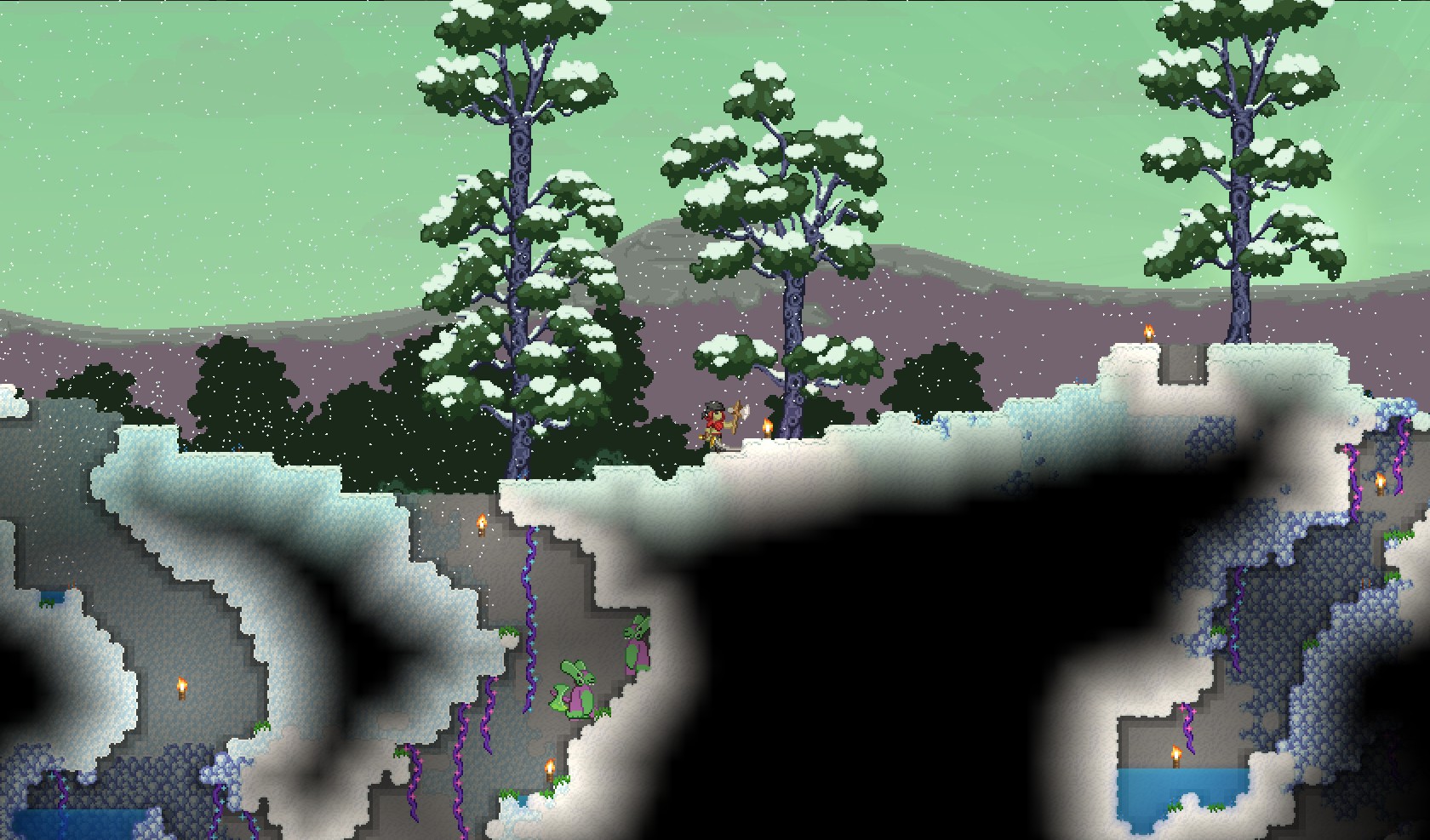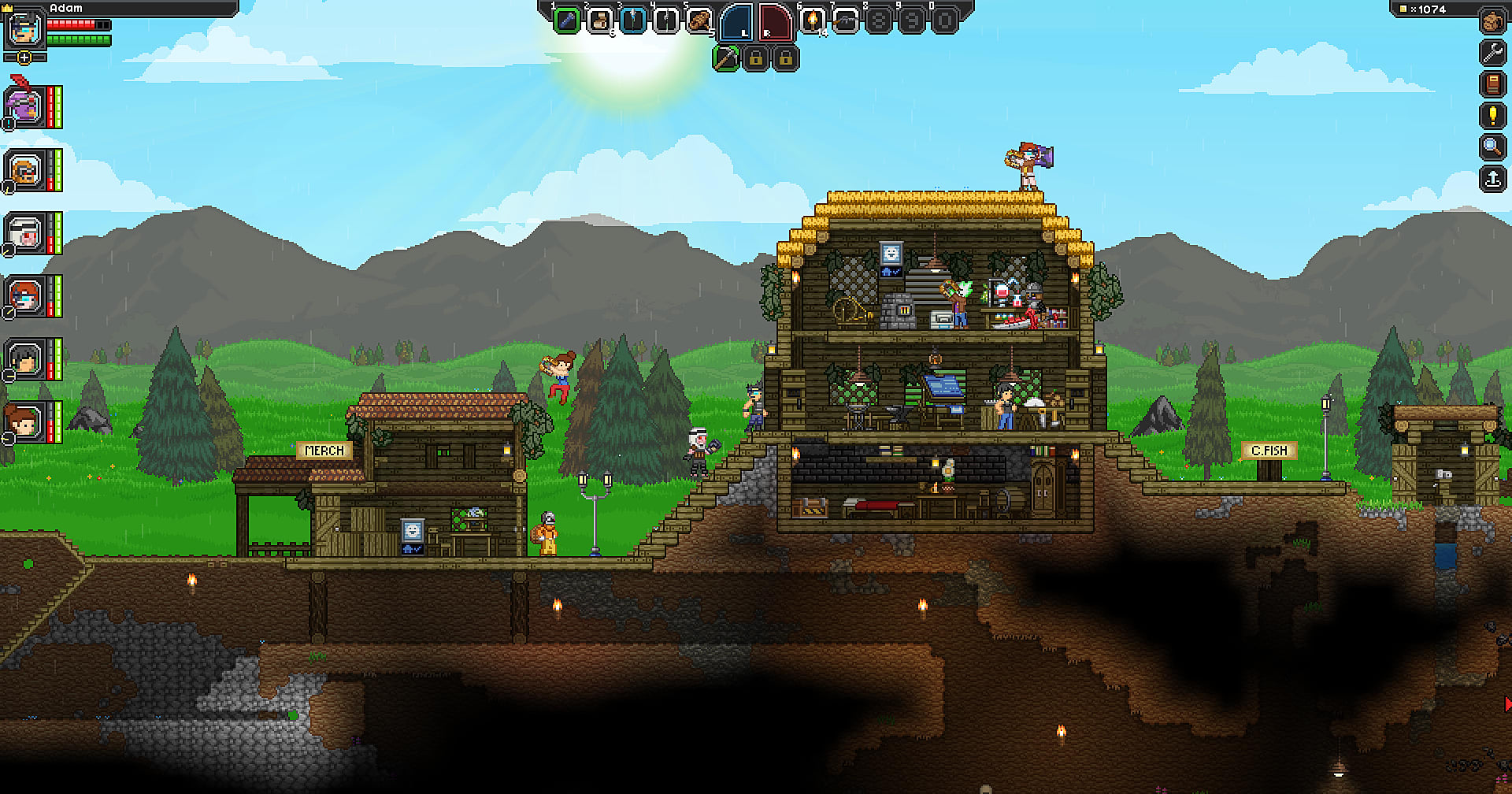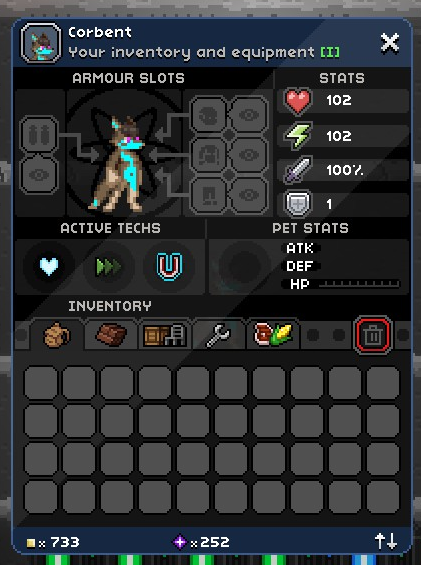


And more broadly, having some art that crosses tile boundaries can make the space feel less rigid and more organic. This allows things like grass and roots to cross tile boundaries in ways that help believability. In order to help flesh out the world, these tiles are 36 pixels tall, extending above the square in which they're placed. The foreground layer is the only layer that uses art at a size other than 24x24. A background layer draws behind everything in the gameplay space, and a foreground layer draws in front of everything. The other 2 tile-based layers are purely visual. Based on which type of resource it is, there are different rules about the geometric position an extracting machine needs to be in to use them. There's also a layer defining where resources exist that can be extracted for use by the factory. There is a layer that defines where water exists in the game. If they don't exist, the game carries on as if they were empty. These are both optional for a given room. The template system lets me organize these into categories, associate an in-editor image with them, and specify any mandatory or optional parameters that the game will be expecting each instance to have.Ģ other tile-based layers have gameplay effects. It instead uses Tiled's template system to allow me to easily lay out gameplay objects like doors, enemies, save points, machines, switches, and cutscene triggers. The second always-present layer is the object layer. In particular, this allows me to define room boundaries that allow the factory to be connected across them. Partial collision means that these flying (gliding, bouncing, clinging) resources can pass through the tile, but the player, enemies, and projectiles cannot. What's partial collision? The core conceit of Kinematic is that Jem goes through the world, building large physics-based Rube Goldberg devices that fling resources around.
#Starbound map editor full
Empty space, partial collision, and full collision.

Each tile in the tileset has one of 3 different collision states.

This is a grid of tiles that define collision (and primary art) for the room. The most obvious layer is the terrain layer.


 0 kommentar(er)
0 kommentar(er)
